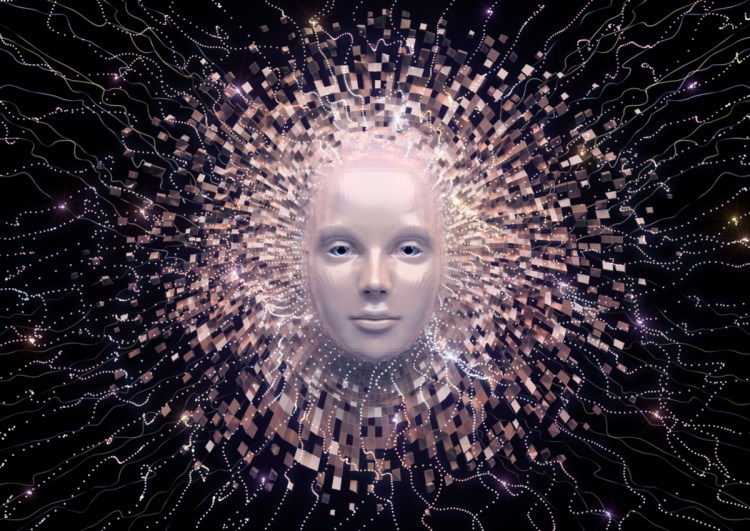Increasing retention by just 10 percent will boost your business value by more than 30 percent. And AI is what can take you there, helping you anticipate customer needs, create personalized campaigns, identify high-value customers and more. Learn how to do it with marketing automation platforms powered by AI when you join this VB Live event!
“Mobile marketers are generally using only five percent of their available data,” says Kara Dake, VP of Growth and Partnerships at CleverTap. “You’re gathering a ton of information, but it’s a challenge, knowing what to do with all that data, and with so many data points.”
Artificial intelligence steps in to save the day, letting you harness that remaining 95 percent in order to enhance conversions and drive retention. And that’s critical, in a world where the competition level for mobile app audience is fierce.
After about day three post-download, 77 percent of users have dropped off, Dake says. That number increases after month one, where 90 percent of users have dropped off, meaning they’ve either uninstalled your app or have just stopped using it. And that’ll go up to 95 percent after three months. The key to your bottom line, according to Dake, is keeping users engaged.
Dake mentioned that acquiring new customers is 5X more expensive than retaining existing ones, a statistic that came up during CleverTap’s recent conversation with Vodafone. Vodafone has been using CleverTap for multiple use cases — from customer insights to personalized user engagement. By segmenting users and sending personalized notifications, Vodafone has seen user engagement increase by almost 3X — which has a direct impact on long term customer value.
“So there’s a huge opportunity to focus specifically on the engagement and retention side, harnessed by the power of an advanced segmentation engine, to drive retention,” Dake says. “You want to deliver a really meaningful, as well as personalized experience, to customers and everything hinges on user segmentation.”
AI-powered segmentation
Segmentation of course means grouping users based on their activities, what they do in an app, location, profile information, and more. Leveraging and automating that process is critical, gathering up all that data that’s been going to waste and plunging deep to allow you to not just engage with customers in real time, but go beyond surface-level segmentation to layer on things like relative importance of a user based on a wide variety of factors.
It enables a marketer to run data-driven marketing campaigns that reach the right users at the optimal time by breaking down the audience by their interests. And you can predict, also, what segments of users are more inclined to respond favorably to an offer or promotion.
Campaign optimization
The next layer is determining the best channels to reach those user segments, and that’s where that prescriptive power of machine learning-powered recommendations comes in, helping you determine everything from the most effective copy for push notifications, the right type of creative for in-app messages, and A/B/C/D message testing in real time.
On the personalization side, you’ll see click-through rates increase up to 25 percent the more personalized you get, Dake says, and you can get pretty personalized when you’re hooking yourself up to AI and diving deep into the data you have at hand.
Increased “golden window” conversion
AI can also help you uncover the best timing for campaigns, or what Dake calls the golden window — something to think about in terms of time-based triggering. This comes into play specifically in campaigns that are running around ticketing, where there are critical time windows when a user is likely to convert or engage.
“The great thing about using AI is you’re able to see patterns of this over time and help determine the golden windows for the different segments,” Dake explains.
For instance, there’s a segment that lives in Los Angeles that’s likely to make a purchase within five minutes, whereas someone in a suburb, just home from work, will likely make a purchase within an hour. You’re then able to determine when best to send those campaigns to trigger them to convert into a final purchase.
Omni-channel escalation
Most users are now experiencing and engaging on multiple devices at different times. Multi-channel marketing just isn’t reaching them most effectively, since each channel is working in its own lane, with its own KPIs and its own goals.
With omni-channel marketing, each channel is working together with overlapping KPIs, in touch with each others’ departments and channels, allowing your entire marketing team to create a more conversational experience with AI, using the power of machine learning to make more data-driven decisions — and ensuring those conversations happen on the right channel at the right time.
“It takes a lot of technology to be able to do this on the back end, but it’s so much better to use a tool that’s able to automate this for you than trying to do this on your own or with your own team,” Dake says. “There isn’t anything more important than going from five percent of your data usage to 95 percent efficacy, enhancing marketing effectiveness and user experience. It’s huge, and a win for both sides.”
Don’t miss out!
In this webinar you’ll learn:
- Key engagement strategies using AI
- How to use AI to strengthen campaigns (including creative, messaging, segmentation and personalization)
- The role of time-based triggering in automation and monetization
- The evolving trends in marketing automation and omnichannel marketing
Speakers:
- Kara Dake, VP Growth & Partnerships, CleverTap
- Aditi Mohanty, Digital Marketing Manager, Vodafone
- Rachael Brownell, Moderator, VentureBeat
- Stewart Rogers, Analyst-at-Large, VentureBeat
Sponsored by Clevertap

